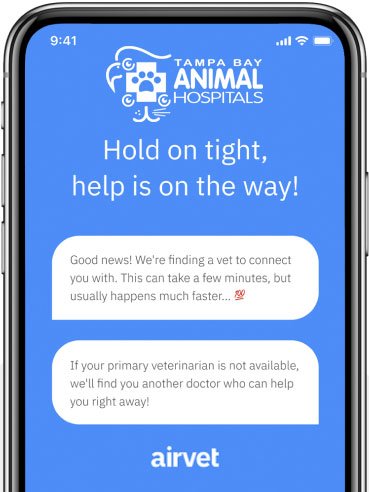Amazons
What to expect from your Amazon parrot
Amazon parrots are known for their strong personalities, high intelligence and excellent ability to mimic. Double yellow-headed, yellow-naped and blue-fronted Amazons seem to have the most potential for talking, laughing, whistling, coughing or even imitating a baby’s cry. The ability to “talk” or imitate sounds is an individual characteristic even within a certain species. This ability seems to be developed best at an early age, probably before the bird is 2 years old. Males may be easier to teach than females. Amazons tend to be the most vocal in the early morning and late afternoon. They can also express vocalization in a negative way by screaming. Although mealy, white-fronted and orange-winged Amazons are not as lively and talkative as other species, they are usually regarded as more gentle and affectionate. Hand-raised blue-fronted Amazons generally make good companions.
Vital statistics
- Body length: 10-18 inches (25-46 cm)
- Body weight (most): 350-600 g
- Age of sexual maturity: 4-6 years
- Maximum life span: 80 years
What do Amazons do all day?
Amazons are more sedentary than other birds, so some effort must be made to keep them active. An exceptionally large enclosure would encourage them to move around more as would an abundance of simple toys with which they can amuse themselves. Because Amazons love to chew, toys must be free of toxic metals, hooks, sharp objects or small, easily consumed components. Providing chew toys or fresh-cut branches from nontoxic, pesticide-free trees may prevent some Amazons from destroying their perches as quickly. Check with your veterinarian for recommendations on locally available, safe trees.
Are Amazons tame?
Young, hand-fed Amazons adapt readily to new surroundings and handling procedures. They should be exposed early in life to novel situations (e.g., car travel, hospital visits, multiple visitors in the household) so they are well adjusted to these events. Adult Amazons tend to become bonded to certain individuals and exhibit territoriality and aggression toward others. They learn quickly to use lunging or biting to relay their negative opinions. Discipline, leadership, patience, hooding (covering the head), a sense of ritual and the offering of rewards are necessary to modify the behavior of Amazons. Even then, they are not completely trustworthy and may bite for no apparent reason, especially after they reach sexual maturity.
Is your Amazon a male or a female?
In most Amazon species it is difficult to reliably distinguish a male from a female based on physical characteristics; therefore, endoscopy or laboratory methods must be used for sex determination in breeding facilities. Amazons are somewhat of a challenge to breed but the offspring are easy to hand-feed.
How to identify your bird
One method used to permanently identify your Amazon in case of loss or escape is for your avian veterinarian to inject a custom microchip under the skin. Although individually numbered leg bands or rings may be applied, this method is unreliable and may result in potential damage to the bird.
Why the wings should be clipped
Amazons that are allowed unrestricted freedom in the home can encounter numerous physical dangers or toxins as well as cause significant destruction; therefore, wing clipping is recommended. The goal of clipping the wings is not to make the bird incapable of flight but to prevent it from developing rapid and sustained flight and to prevent escape. Retrimming is needed after a molt. Even with clipped wings, Amazons can get around quite well by climbing and walking, so they should not be allowed outside their enclosure without supervision.
How to keep your Amazon parrot healthy, happy and safe
- Give lots of attention and leadership training.
- Feed a fresh, high quality, toxin-free, formulated diet with daily supplementation of chopped vegetables and fruit according to manufacturer’s recommendations.
- Grit is not necessary with modern captive bird diets.
- Provide clean, fresh uncontaminated water (try using water bottles) and replace twice daily.
- Remove and replace food containers twice daily to maximize activity in a healthy bird.
- Provide an occasional opportunity for bath, shower, or misting (at least weekly).
- Avoid spraying house with insecticides.
Housing for your Amazon should:
- be as large as possible (minimum: 2’ x 3’ x 2’)
- be clean, secure and safe.
- be constructed of durable, nontoxic material.
- contain variable-sized perches made of clean, nontoxic, pesticide-free tree branches.
- have food and water containers placed at opposite ends of the enclosure.
- avoid having perches located directly over food containers.
- offer occasional protected outdoor exposure to fresh air, sunlight and exercise.
Amazons are very curious and will investigate anything new in their environment. That is why it is important to prevent their access to:
- ceiling fans
- hot cooking oil
- overheated nonstick-coated cookware
- leg chains
- sandpaper-covered perches
- tobacco and cigarette smoke
- chocolate, avocado, salt, alcohol
- toxic houseplants
- pesticides
- toxic fumes
- easily dismantled toys
- dogs, cats and young children
- cedar, redwood and pressure-treated wood shavings
- sources of lead or zinc
- plug-in air fresheners
- heavily-scented candles
What your veterinarian looks for in a healthy Amazon parrot:
- Dry, open nares
- Clear, bright eyes (no discharge)
- Smooth beak
- Alert, erect posture
- Body free of lumps and bumps
- Smooth, bright feathers without color breaks, transparency or ragged edges
- Even, reptilian pattern on the feet, and nails of appropriate length
Most common disorders of Amazon parrots:
- Behavioral
- Obesity
- Respiratory signs (sneezing, runny nose, swollen eyes)
- Vitamin A deficiency
- Discolored feathers
- Lethargy, weakness
- Chlamydiosis
- Bacterial diseases
- Tumors
- Sores on the feet or in the mouth
- Blood in the droppings
- Feather picking
- Cloacal protrusions
- Egg-binding
Exposure to toxins
The most common disease conditions in Amazon parrots are often the result of malnutrition. Visiting your avian veterinarian for routine health checks will help prevent many of the above diseases and support you in having a long, satisfying relationship with your Amazon parrot.
Background information
Depending on classification, there are approximately 27 species of Amazon parrots (some with subspecies). Their native habitat ranges from South America to Northern Mexico. Nine species of Amazons are from islands in the Caribbean. Deforestation of their natural habitat and capture for the pet trade has greatly reduced the numbers of these once common species. Most free-ranging species are considered threatened or endangered and efforts to protect these birds have resulted in a ban on importation for pet purposes in the United States and Europe. High quality companion birds are available from breeders. Amazons have extroverted personalities and entertaining antics, but these birds don’t always enjoy being touched or “cuddled.” Some may be considered hyperactive or short-tempered. They generally are not good pets around children.
Courtesy of Zoological Education Network
Tampa, FL 33615 (View map)
Tampa, FL 33647 (View map)
Tampa, FL 33617 (View map)
Tampa, FL 33647 (View map)










